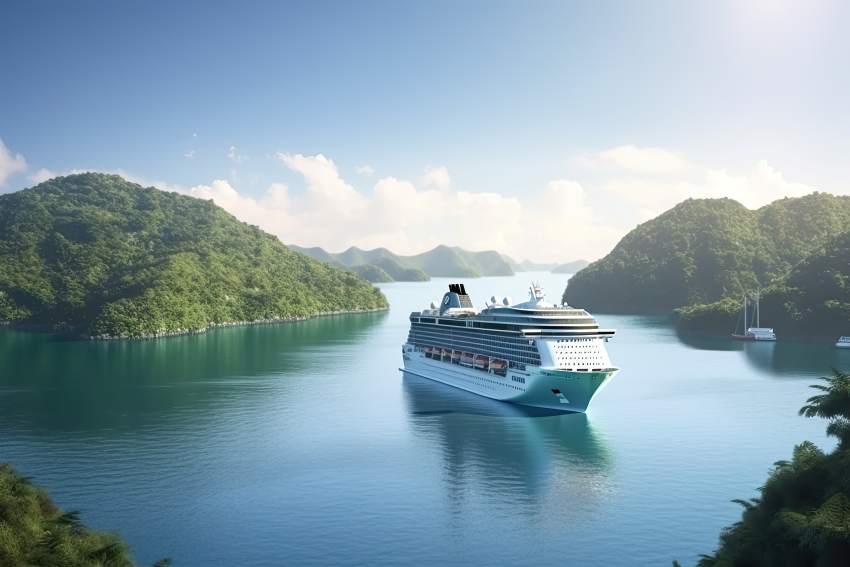Wednesday, July 2, 2025
The allure of sunlit promenades and the glamour of the Côte d’Azur has come at a price. As early as January 2026, Cannes will refuse docking to cruise ships carrying more than 1,000 passengers, and daily disembarkations will be capped at 6,000. Passengers on larger vessels will now be tendered ashore via smaller boats. The city’s move reflects a broader shift across Europe, following in the footsteps of Venice, Barcelona, Amsterdam, and now neighbouring Nice.
A Community Under Pressure
What was once a quaint fishing port is now a global tourism magnet—an image reinforced by the famed Cannes Film Festival. But with popularity comes overcrowding. Cannes Mayor David Lisnard emphasized that the goal isn’t prohibition, but “regulating, organising, setting guidelines for their navigation” to ensure tourism is “less numerous, less big, less polluting and more aesthetic” . With a population of just about 75,000, the city has borne the impact of 175 cruise ship visits and over 450,000 cruise passengers in just one year .
Policy Details: Cruise Restrictions in Cannes
- Passenger limit per vessel: No more than 1,000 passengers allowed to dock directly.
- Daily disembarkation cap: Maximum 6,000 cruise passengers ashore per day .
- Tendering requirement: Vessels exceeding limits must anchor offshore with passengers ferried in.
- Implementation date: Effective January 1, 2026 .
“This is not a ban,” Mayor Lisnard clarified. “It’s a matter of responsible tourism management” .
A Widening European Strategy
Venice famously barred large cruise ships from its lagoon in August 2021 to protect historic foundations and water quality.
Barcelona introduced passenger caps in 2023 to curb congestion in its medieval quarter.
Amsterdam is shifting cruise terminals away from the city centre to reduce pollution.
Now Cannes and Nice join the vanguard in the Mediterranean.
Nice, just east of Cannes, had earlier announced (July 1, 2025) a prohibition on ships over 190 m long or carrying more than 900 people—“floating hotels…have no place here” . However, following intense backlash from port authorities and local businesses, Mayor Christian Estrosi revised the proposal in March 2025. The new compromise allows:
- Up to one large ship per day anchoring offshore, tendering passengers to Villefranche‑sur‑Mer or Nice,
- A total of 65 annual visits by ships carrying no more than 2,500 passengers .
Amid local debate, the adjusted plan attempts to blend economic interests with environmental concerns. Estrosi, now emphasizing balance, said the aim is to “protect health and the local economy” .
Why These Moves Matter
Cruise ships bring sharp spikes in short‑stay visitors. Studies show cruise‑only tourists spend less ashore—often under €23 per person in some ports—while generating disproportionate pollution via continuous engine use and sulphur dioxide emissions.
Cruise liners, in turn, are among the largest emitters: sulphur dioxide from one mega‑ship can equal that from 30,000 cars. They overwhelm narrow coastal roads, earthquake‑shake fragile heritage sites, clog waste systems, and degrade daily resident life.
A Hopeful Path Forward
The reforms in Cannes and Nice symbolize a shift from unbridled tourism growth to sustainable tourism stewardship—seeking an equilibrium where visitors enjoy the Rhône breeze, but residents also breathe easy.
Local business owners, especially those dependent on cruise‑generated footfall, express concern—but officials assure that smaller, more boutique tourism will flourish, perhaps even yielding higher economic returns per tourist.
Conclusion: Human Faces, Real Change
For locals like café owner Marie Lefèvre, this is personal: “When 6,000 cruise guests descend in one morning, our narrow streets flood—shops struggle, and it loses its charm.” Meanwhile, families raising children amid this tourist tide cherish any step toward preserving their Riviera lifestyle.
As Cannes prepares for January 2026, it hopes these measures tame the tourist tide without dampening the festivity. In the end, it’s about crafting a future where seaside sunsets aren’t eclipsed by overcrowding—and warm welcomes remain genuine.
Sources
- Cannes council & Mayor Lisnard statements and cruise‑ship regulations
- Nice initial ban & revised policy under Mayor Estrosi
- Environmental and economic impact of cruise tourism
«Enjoyed this post? Never miss out on future posts by following us»
Tags: Amsterdam, Barcelona, Cannes, Cannes cruise ban, Europe, European cruise restrictions, france, french riviera, greece, Italy, Mediterranean coast, Netherlands, Nice, Nice cruise limits, overtourism France, Provence-Alpes-Côte d’Azur, santorini, spain, sustainable tourism Riviera, Venice, Villefranche-sur-Mer
